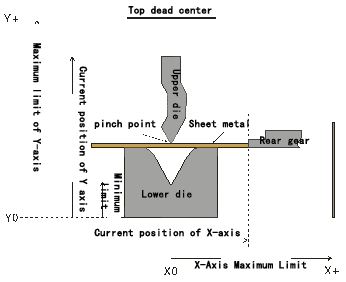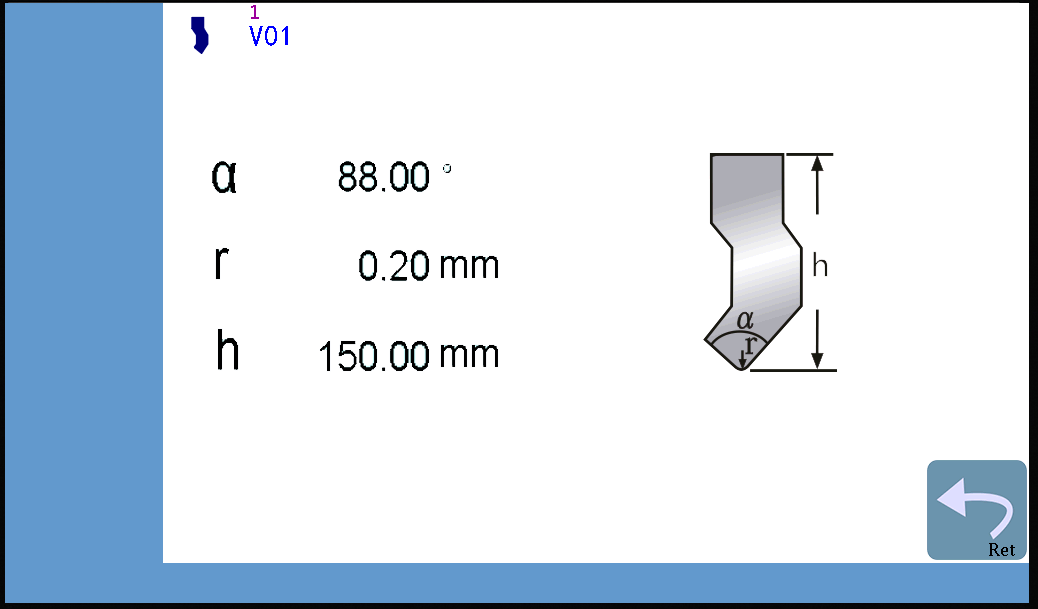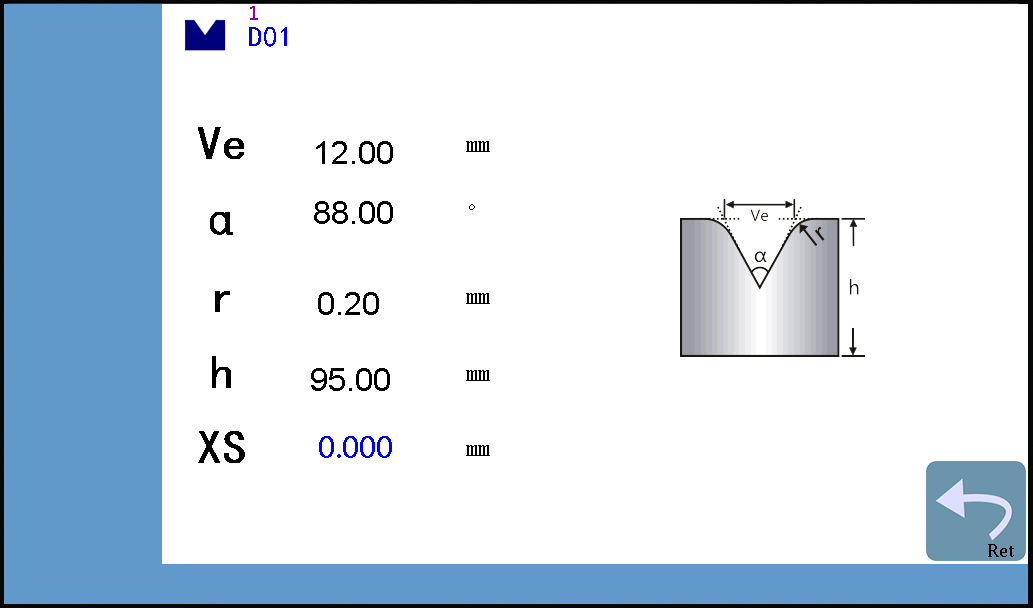Центр документации
Исчерпывающие технические руководства и справочники помогут вам освоить станки HARSLE и оптимизировать эффективность металлообработки
Как добиться точности при гибке HS-15T?
Achieving precision in bending applications is crucial for producing high-quality workpieces, and HS-15T Bending Application is specifically designed to meet this demand. If you’re looking to enhance the precision of your bending operations, you’re in the right place. In this guide, I’ll explore how the HS-15T Bending Application can help you achieve that precision by providing detailed insights and tips. We’ll look into the features that make HS-15T stand out and how these can be effectively utilized in your projects. Whether you’re a seasoned professional or just starting in metal fabrication, this article will equip you with valuable knowledge to refine your bending techniques and improve your overall productivity.
Setting Up the HS-15T Bending Application
Step 1: Preparing the Machine and Work Area
To achieve precision with the ХС-15Т Bending Application, the first step is to ensure that your machine and work area are properly prepared. Start by turning on the main power switch on the cabinet and activating the oil pump; at this point, the machine should remain idle. Make sure the emergency stop button is not engaged, as this will prevent the machine from operating. Before you begin, check that the floor is level and the work area is clear of debris, as these factors can significantly impact the accuracy of your bending operations.
Step 2: Selecting and Installing the Proper Tooling
Selecting the appropriate die is crucial for precision. For example, if the thickness of the bending plate is 2 mm, choose a groove six times the width of the plate thickness; thus, for a 2 mm thickness, a 12 mm bending groove Ve should be selected.
Criteria for choosing the opening of the lower die:

Install and adjust the tooling carefully by ensuring that all components are securely fixed and aligned to avoid any deviations during the bending process.
Operating the HS-15T Bending Application
The X/Y axis position and motion direction sketches are as follows:

This example is illustrated by programming the following products:

Замечания:

If you encounter an emergency or need to return during the operation, you can click the button to return to the top dead point.
If the backstop concession distance is set, the backstop concession begins after the clamping time arrives.
Program the machine according to the bending requirements, ensuring the angles and lengths are accurately inputted: Step 1 involves a 90-degree bend with a 60 mm length, and Step 2 requires a 120-degree bend with an 80 mm length.
Step 3: Choosing the Correct Working Mode
The HS-15T Bending Application offers three working modes: point, single, and continuous. Each supports automatic step changes, ensuring a smooth transition to subsequent bending steps. Choose the mode that best fits your project’s needs for efficient and precise results.
Turn on Electricity
First, turn on the main power switch on the cabinet, and then start the oil pump (the machine does not operate at this time).
Pay attention: Do not press the emergency stop button, otherwise the machine can not operate and the oil pump can not start.
Display Panel Foundation Settings

Click on the icon on the main page of programming and input the thickness of the board (2mm).


Click on one of these two icons, edit the die (top/bottom) on the pop-up page.
The upper model is edited as follows:

The following model is edited as follows:


Click on the icon on the main programming page to enter more bending data.
Шаг 4: Calibration by Manual Moving Mode
Calibration is essential for precision bending. In the HS-15T Bending Application, you can manually move the Y axis (slider), X axis (back shield), and R axis (shield finger) for position calibration.
- On the programming page, click on the menu icon and select “Manual Move” from the pop-up menu to enter the manual page.
- Click’ – /++ ‘or ‘More’ button to move the selected Y axis (slider)/ X axis (back shield)/ R axis (shield finger). When each axis is moved, the current value of the axis coordinates changes accordingly, and the movement can stop until it moves to the appropriate position.
Setting the Reference Point for the X-axis:
To ensure precision in the HS-15T Bending Application, use a measuring tool to determine the length of a reference position from the clamping point to the back shield. Record this measured value in the settings above the back shield icon. When the X-axis moves, place a piece of sheet material between the upper and lower dies. Push the sheet material to engage the backstop, then gently step down, making the upper die press the sheet without deforming it. Step on the foot to return the upper die to the upper dead point and measure the impression marks and the small plate. This vertical distance represents the length from the clamping point to the back shield, crucial for achieving precision with the HS-15T Bending Application.
Setting the Reference Point of Y-axis:
For the Y-axis in the HS-15T Bending Application, use a measuring tool to measure the distance from the bottom of the lower die to the top of the upper die. Input this measurement in the settings above the back block icon. To find this distance, return the upper die to the upper dead point by stepping on the foot, move the Y-axis to a certain slider position, and then step down to prevent further downward movement. Measure the vertical distance from the bottom of the lower die to the top of the upper die. This accurate calibration ensures the precision of the HS-15T Bending Application.
Часто задаваемые вопросы (FAQ)
How can I ensure precision with the HS-15T Bending Application?
To achieve precision with the HS-15T Bending Application, start by ensuring your work area is clean and the machine is correctly calibrated. Adjust the Y and X axes accurately using manual mode, and select the appropriate tooling for your specific material thickness. Regularly check and maintain the machine for optimal performance.
What steps should I follow to set up the HS-15T Bending Application properly?
Begin by turning on the main power switch and starting the oil pump, ensuring the machine is ready for operation. Choose a die that matches the material thickness and program the machine for your specific bending angles and lengths. Use the manual moving mode for precise calibration of the machine axes.
What maintenance is required for the HS-15T Bending Application to maintain its precision?
Perform routine maintenance every 500 hours of operation. This includes inspecting the machine for wear and tear, ensuring proper lubrication of moving parts, and cleaning to prevent debris build-up. Following these steps will help maintain precision and prolong the lifespan of your HS-15T Bending Application.
Заключение
In summary, achieving precision with the HS-15T Bending Application involves a meticulous setup process and consistent maintenance practices. By selecting the appropriate tooling, accurately calibrating the machine, and choosing the correct working modes, you ensure the highest quality outcomes for your bending projects. Regular inspections, lubrication, and cleaning are crucial to maintaining operational efficiency and extending the life of your machine.
For further assistance or to explore more about optimizing your metal bending processes, feel free to reach out to our expert team for guidance and support.













